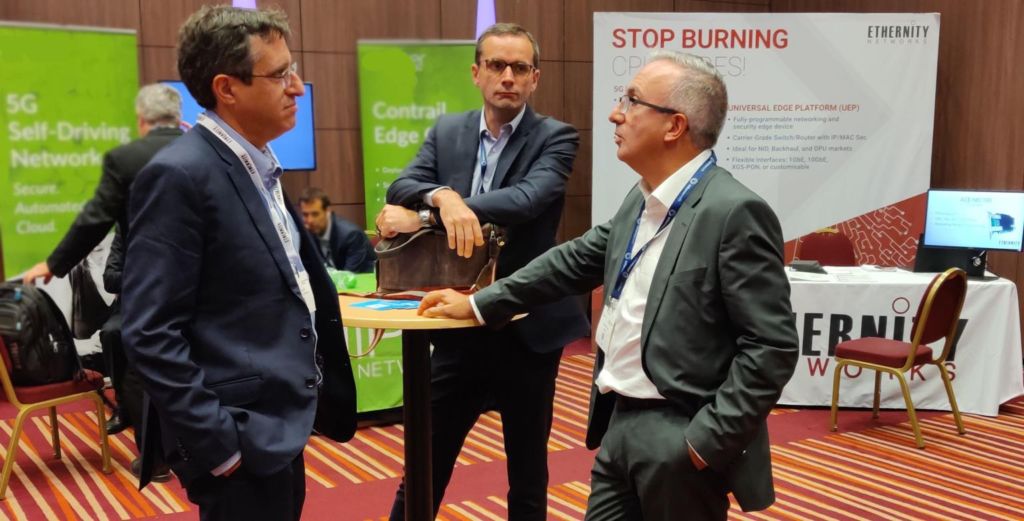 by Brian Klaff
by Brian Klaff
At the 2019 edition of the Edge Computing Congress last week, Ethernity Networks was in attendance to promote our 5G UPF Acceleration solution and Universal Edge Platform network appliance. The conference had been held in Berlin the previous two years, but it moved to London this year, with an impressive agenda of top speakers and a small but power-packed exhibition area.
The most prevalent topic of conversation was, of course, Multi-access Edge Computing (MEC), with emphasis on both the required infrastructure to enable the edge and the development of the applications that will benefit from edge computing. The clear takeaway from the two days of sessions was that operators are ready to invest heavily in the edges of their networks.
There are various reasons for this, but first and foremost among them is the push to implement 5G. There is no doubt that 5G is coming, with initial trials already underway and widespread rollouts expected in 2020. But from the analysts that Ethernity spoke to, the overarching sense is that operators have both high expectations and serious flaws in the planning. For example, many 5G deployments are barreling ahead and relying heavily on virtualization without considering whether the existing hardware is able to support such a network. In one presentation, Julian Bright of Ovum emphasized the need for flexible, scalable hardware that is capable of being hosted in any location, from cell sites to remote closets.
Of course, this plays perfectly into Ethernity’s strength. Our ACE-NIC100 FPGA SmartNIC is ideal for deployment at the edge, saving customers precious space and power, while providing high performance that can easily scale to handle even the most demanding access networks.
Despite the commitment to spend on edge computing, a number of major concerns still exist. For example, given the need to build hundreds of edge facilities, operators worry about the total cost of ownership, including maintaining a workforce across the edge. Operators therefore need networking automation at the edge, and Ethernity’s flow processors can help support such automation with programmable OAM features on the FPGAs.
Another issue that operators face at the edge is that of standards, regulation and SLAs. The ETSI MEC Industry Specification Group is working on yet another phase of specifications and edge computing use cases for telecom companies that, unlike their cloud provider counterparts, are heavily regulated and forced to maintain high quality of service experience. Ethernity’s 15 years of networking experience and our support for carrier-grade SLAs and hierarchical quality of service on our ACE-NICs make us an ideal partner for operators with edge ambitions.
A couple of other questions regarding 5G permeated the event:
- Is the race to implement 5G-capable infrastructure driving developments in edge computing, or are developments in low latency-dependent applications, such as Industrial IoT, autonomous vehicles, augmented/virtual reality, and gaming the stronger drivers for progress at the edge?
- Are the 5G trials and initial deployments realistic indicators of success, or are the current bandwidths still too low to predict success upon full rollout?
Ethernity is confident that the ideal 5G deployment will combine network virtualization with hardware acceleration. By offloading the 5G User Plane Function to an FPGA SmartNIC, the server CPUs can be dedicated to the functions they are better at handling, namely control function and user applications.
FPGAs are better optimized for data transport than CPUs, and Ethernity’s patented ability to reduce the space required for flow processor logic allows our FPGA SmartNIC to include full router capability directly on the NIC. This unlocks the potential for tremendous savings in space, power, and CPU utilization for cost-conscious telecom operators.
After many positive conversations with industry analysts and potential partners and customers, we are already looking forward to the 2020 Edge Computing Congress. By then we expect to know a lot more about 5G progress and the need for Ethernity’s solutions.

